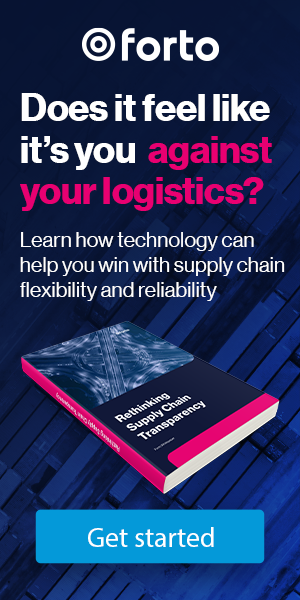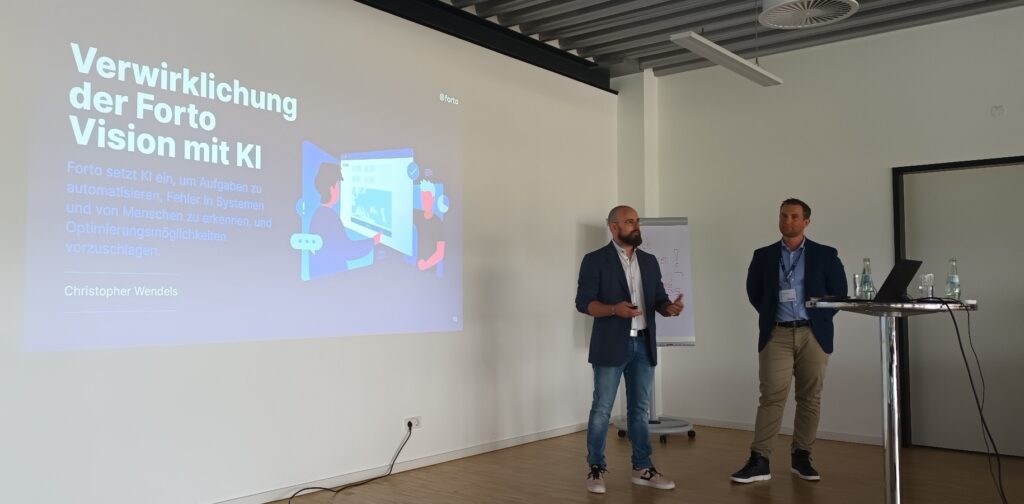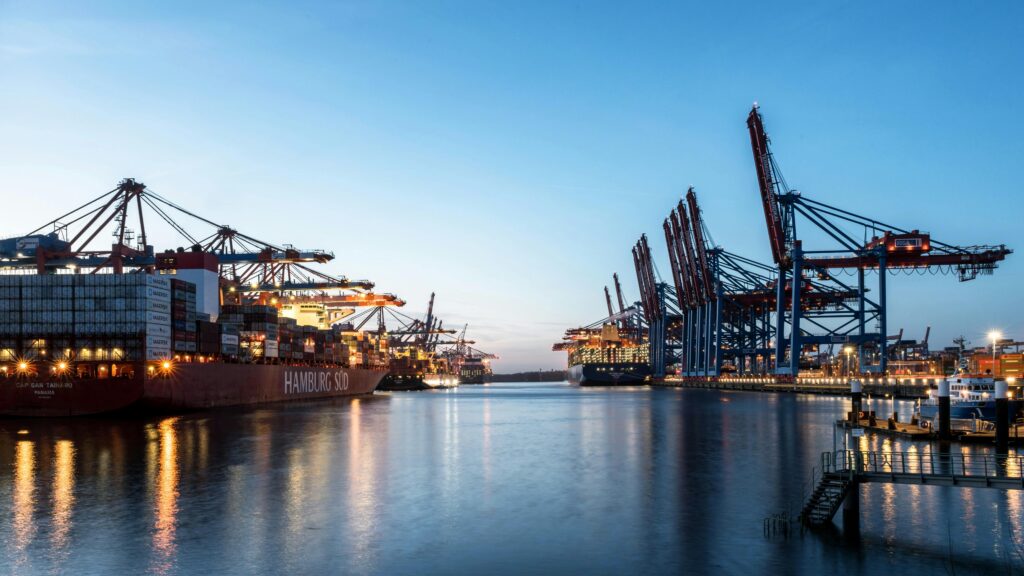Sulfur, pollutants, and especially pollution is incredibly hazardous for the environment, and they are rampant in the logistics industry. Find out what this means for the industry and what Forto is doing to help fight global warming. In this blog article, you will learn what steps you can take to reduce your production.
New IMO regulations 2020
At the start of the new year, the sulfur content (SOX) in the fuel of ships may only be 0.5% or less. The international shipping industry is under time pressure to comply with stricter environmental regulations. While the new regulation is aimed at reducing the sulfur content of heavy oil, the main source of fuel in freight ships since they’ve switched from coal back in 1955. In particular, the efforts being made will go a long way towards reducing overall carbon emission levels as well as other pollutants from ocean freight in an attempt to reduce the industry’s carbon footprint.
Limiting SOx emissions from ships will improve air quality and protects the environment. IMO regulations plan to reduce sulfur oxides (SOx) emissions from ships that first came into force in 2005, under Annex VI of the International Convention for the Prevention of Pollution from Ships (known as the MARPOL Convention). Since then, the limits on sulfur oxides have been progressively tightened.
MARPOL, an organization adopted by the International Maritime Organization of the United Nations (IMO) in 1973, has laid the foundations for regulations on sulfur and particulate emissions from shipping. According to the Convention, the sulfur content of marine fuels or exhaust gasses is currently to be reduced in stages:
- 4.5% m/m (percentages by mass in marine fuel) before 1.1.2012
- 3.5% as of 1.1.2012
- 0.5% as of 1.1.2020.
Currently, normal heavy fuel oil contains an average of 2.7% sulfur. Since the sulfur limit applies to all ships, not just new ones, the regulation correspondingly greater influence on the shipping as the regulation of nitrogen emissions, in addition to sulfur.
Pollution and the planet
The number of wildfires, severe storms, massive hurricanes, and other seeming natural disasters have been on the rise over the past few years. While nature is a force onto itself, much of this phenomenon has been provoked by the steady rise of global temperature. As humanity reaches towards the life conveniences created by science, little thought is paid to the unintended consequence that we pay for in the name of progress. According to constant monitoring from NASA, the average global temperature has risen 1.9 degrees since 1880. While it might not seem like all that much, that number is still on the rise and will have devastating and irreversible effects on the world.
Unless we act now.
Sulfur, pollutants, and especially pollution is incredibly hazardous for the environment, and they are rampant in the logistics industry. Find out what this means for the industry and what Forto, is doing to help fight global warming. In this blog article, you will learn what steps you can take to reduce your production.
CO2 emissions in the logistics sector
The logistics necessary to power the global supply chain is an incredibly robust and complex machine but it allows for the sending of goods around the world easier and cheaper than ever before. However, logistics and transportation is one of the world’s biggest sources of greenhouse gas emissions. Understanding the impact of the logistics sector is important to understanding why we need to start making changes.
First thing first – what happened globally
In May 2019, US scientists from the NOAA (National Oceanographic and Atmospheric Administration) registered the highest concentration in the Earth’s atmosphere since their records began in 1958.
The value was measured by NOAA in the observatory on Mauna Loa, Hawaii. The measuring station is one of the most important reference points for measurements and the values are considered representative for the northern hemisphere of the earth.
The maximum value for the year was 414.7 parts per million (ppm). A value that last existed three million years ago. Since the 1970s, the average rate has been rising faster and faster: from 0.7 ppm annually to 2.2 ppm. In May 2019 the figure was as high as 3.5 ppm. The average temperature of the earth’s surface has risen by one degree since the beginning of industrialization
Researchers do not agree on which value is considered desirable. However, a value of 350 parts per million should at least be able to control global warming, according to the unanimous opinion. “But even a stable value would also be a gain”, says Wolfgang Lucht of the Potsdam Institute for Climate Impact Research. This much is certain, however, if we continue as before, the average temperature on Earth could rise by 1.5 degrees Celsius by the end of the century, and in the worst case by 7.8 degrees Celsius.
Current situation in the ocean freight sector
Over the past decades, maritime transport has grown steadily worldwide. And with it its CO2 emissions. About 90% of the world’s trade is carried by sea. In 2015, around 10 billion tons of ocean freight were transported worldwide by around 50,000 cargo ships. Around 90% of the entire cargo ship fleet is powered by heavy fuel oil.
Heavy fuel oil, or high-sulfur fuel oil (HSFO), is technically the leftover of an oil refiner’s output. Heavy oil contains sulfur, aromatic hydrocarbons (PAH) and heavy metals; the combustion of heavy oil produces not only but also particulate matter (soot) particles, sulfur (SOx) and nitrogen oxides (NOx).
Depending on size, year of construction and cruising speed, a freighter or tanker usually consumes between 30 and 80 tons of heavy fuel oil per day at sea, but it can also be several times as much depending on the size of the load and the frequency of runs. Furthermore, the 15 largest ships in the world emit as much nitrogen oxide and sulphur oxide as 760 million passenger cars. That is more than 3/4ths the total number of vehicles on the road world-wide.
According to the Third Greenhouse Gas Report of the IMO of 2014, nitrogen oxide emissions from shipping as a whole accounted for about 15% of global NOx emissions and sulphur oxide emissions (reduced by about 30% compared with 2009) from shipping as a whole for about 13% of global SOx emissions. In terms of international shipping, it accounted for 13% of global NOx emissions and 12% of global SOx emissions.
The report also explained that, shipping emitted an average of approx. 1,000 million tonnes annually between 2007 and 2012 (corresponding to 3.1% of global emissions; 846 million tonnes in relation to international shipping = 2.6% share of global emissions). By putting it in the contest, this share of emissions corresponds approximately to the total greenhouse gas emissions of Germany.
The IMO report predicts that ship emissions could rise between 50 and 250% by 2050, depending on future economic and energy developments. Maritime transport will then be responsible for 4 to 15% of global emissions.
To make the problem worse, the level of fuel consumption is increasing. Total shipping fuel consumption increased from 291 million tonnes to 298 million tonnes (+2.4%) from 2013 to 2015, compared to a 7% increase in transport supply.
The challenge for the industry is its goal of halving carbon dioxide emissions by 2050 compared to 2008.
The Paris Agreement Excluded Ocean Freight
The Paris Agreement is a global response to the pollution problem. The agreement began back in 2015 and is a summit of all nations coming together to combat the radical effects of climate change through transparency and communication. The purpose of the Paris Agreement as defined by the United Nations Framework Convention on Climate Change (UFNCCC) is as follows:
“The Paris Agreement central aim is to strengthen the global response to the threat of climate change by keeping a global temperature rise this century well below 2 degrees Celsius above pre-industrial levels and to pursue efforts to limit the temperature increase even further to 1.5 degrees Celsius. Additionally, the agreement aims to strengthen the ability of countries to deal with the impacts of climate change. To reach these ambitious goals, appropriate financial flows, a new technology framework, and an enhanced capacity-building framework will be put in place, thus supporting action by developing countries and the most vulnerable countries, in line with their own national objectives.”
However, the shipping industry which generates a substantial amount of the world’s greenhouse gasses was not a part of the agreement. Contrary to the fact that the three major ship classes, according to the International Council on Clean Transportation study, accounted for 55% of the total shipping emissions: container ships (23%), bulk carriers (19%), and oil tankers (13%).
The challenge that’s facing the regulators and the industry as a whole is the fact that ships generally operate in international waters.
To add to the complexity, flags on the vessels don’t necessarily represent the nationality of their owners, which further muddies the waters of oversight. Unless a ship directly fouls the water around a port or a coast, there has been little other concern in the past.
So, since ships don’t have a true “home” that the shipping industry was excluded from the Paris Agreement as a participant to help combat gas pollution.
It is because the Paris Agreement didn’t include the transportation and freight industry that the actions of the IMO are vital. Freight produces a considerable amount of pollution and the IMO is taking steps towards policing what would have otherwise been left unchecked.
The alarm has been sounded now, as we are quickly approaching a point of no return for climate change.
Concerns Within the Industry
While curbing the pollution and greenhouse gas emissions are more important now than it ever was, there are still those that are complaining or, at the very least, concerned about the ramifications of these new changes. With the new IMO ruling goes into effect, the freight industry will have to ensure that they are compliant or run the risk of fines, penalties, and other sanctions which could even include a loss of insurance. When the new regulation comes to pass some 60,000 ships will be switching out their heavy fuel oil for low-sulfur mixes or other alternative fuel blends that are still in development. This move will cause a spike in fuel oil costs, adding some US$ 50 billion in fuel costs for the industry over the next three to four years.
In addition to the high costs of the new fuels, there are also those that are concerned there won’t be enough to go around or that, worse still, the new blends won’t work as well in ship engines, which has some quarters of the industry asking for a delay in the new regulation.
“Better late than never,” said Lars Robert Pedersen, deputy secretary-general of Bimco, an industry trade body. “Shipping is cleaning up its act, despite sometimes loud opposition from some parties with a big say in the industry, and there is no turning back.”
The IMO reasons that the cost inflation should only be temporary as new fuels are developed, manufactured, and become more readily available. As for the supply, the IMO is confident that there will be more than enough of the new fuel to go around.
A study commissioned by IMO into the “Assessment of fuel oil availability” concluded that the refinery sector has the capability to supply sufficient quantities of marine fuels with a sulfur content of 0.5% m/m or less and with a sulfur content of 0.1% m/m or less to meet demand for these products, while also meeting demand for non-marine fuels. You can download the full study here.
IMO stays the course
Despite the numerous complaints and concerns, the IMO has stood its ground.
“We are moving full speed ahead,” IMO Secretary-General Kitack Lim told The Wall Street Journal in June. “I understand some of the concerns, but shipping must do what it has to do to protect the climate.”
And the IMO isn’t content to stop there. They are pushing for more improvements on an aggressive timeline, requiring operators to improve their ship’s fuel efficiency by 30% by 2025. They have also promised to cut 2008 level greenhouse gas emissions in half by 2050.
Remember, shipping accounts for approximately 2.5% of global carbon dioxide emission levels, about the same level as the world’s biggest polluting countries. The IMO cautions that if they don’t start taking action now, that level could rise anywhere between 25% and 50% by 2050.
However, even with improved efficiency, container ships might not reach a true state of neutral.
“Although the intensity of many major ship classes decreased (i.e., they became more efficient) from 2013 to 2015, total emissions from ships increased. Even in some cases where a ship class became much more efficient, their emissions increased. For example, although the intensity of general cargo ships (measured as emissions per unit of transport supply) decreased by 5%, emissions increased by 9%. Thus, increases in distance traveled due to a greater demand for shipping more than offset gains in operational efficiency during the period studied,” reads a report ICCT.
Improving efficiency and reducing polluting fuels is only part of the solution. In order to reserve the damages and truly fight climate change, there must be a holistic solution, not just for the shipping industry, but for all countries and emission causes.
Why we all need to care about CO2 emissions
Globalization makes it easy to send goods around the world. The cost of shipping goods has never been as low as now. However, the choice of the means of transportation does severely influence the amount of emitted for the transportation of goods.
As we mentioned earlier, freight ships are one of the worst machines when it comes to pollution. However, the logistics engine, as a whole, is guilty for upwards of 20% of global CO2 emissions since freight ships switched from coal to heavy oil. Shipping isn’t the only one to blame, everyone has a hand in this game and everyone is responsible for contributing to the carbon emission levels in the world by some degree or another.
How to reduce CO2 emissions Your Operations
Make Supply Chains sustainable, step by step
The logistics industry is facing new and different challenges, seemingly every day. Combine that with the already complex nature of the supply chain and it quickly becomes a tangled mess. Where do you even start?
In the future, it will be necessary to cope with natural disasters caused by climate change – thanks to fast, stable and adapted logistics. The winners of this development will be logistics providers who guarantee security for their customers’ supply chains. Given the instability of global supply chains, the logistics industry relies on huge warehouse locations close to production sites to act as indispensable buffers. These double logistics chains serve as a security network for businesses that will keep them operational even in the face of a natural disaster.
Building a greener logistics engine is a holistic task that encompasses all aspects of your business. It starts with IT, which organizes shipment processes more efficiently in order to reduce empty runs and make optimum use of transportation. That optimization should, necessarily, consider every facet of the supply chain, down to choosing the greener vehicles, which all consume less and are to rely on alternative drive concepts. As the fate of the world hangs in the balance, all major logistics service providers have taken the first steps in this direction. This is not only good for their image but will also reflect positively in their suppliers’ balance sheets in the long term.
Why and how Forto decreases its carbon footprint in the office
We practice what we preach. Although we are a young company, this topic is also highly important to us and we are taking actions to contribute to the world and to reduce our carbon footprint. We implemented a long list of measures to make Forto itself a sustainable company, e.g. water fountain instead of bottles, mostly local and organic food, mostly vegetarian diet instead of meat. We avoid plastic wherever possible, in using recycled toilet paper and reusable hand towels, waterfree urinals reduced water pressure and recycled printing paper. In our meeting boxes and offices, we have LED lights only and energy-efficient computer screens. In addition, we travel mostly (90%) by train instead of planes, and recently founded a climate action group within Forto.
Additionally, all CO2 emissions that cannot be avoided are being offset through a partnership with Atmosfair, a non-profit organization that works with businesses to help them be more mindful of their environmental impact, as well as implementing various projects around that world that can help to mitigate energy consumption. As a result, we are happy to say that Forto itself is completely CO2 neutral.
But we’re not done yet.
In the future, we will calculate and show the CO2 emissions that are caused by the shipments we handle for our customers, giving them the option to offset the CO2 emissions directly just like air freight.
We believe that there’s a growing need for such features as more businesses are becoming environmentally conscious. Through higher transparency, we provide better visibility and utilization of containers and assets which helps not only decrease operational costs but also CO2 emissions output from freight.
How Forto’s technological approach helps to develop products and services that reduce carbon dioxide emissions
The freight forwarding market, or the 3PL market if you will, is fraught with inefficiencies. Often described as a “people business”, customers have often found themselves waiting by the phone or for the elusive email for several days in anticipation for confirmation on a rate and/or booking with no insights into how efficient or inefficient the operation was.
FreighHub has built a platform with millions of data points. The technology can generate various shipping scenarios, create real-time quotes and tracking information for customers in real-time and make the entire shipping process simple and transparent.
At Forto, we don’t own trucks, ships or planes. We are completely asset-free with no direct ownership on emission infrastructure and manage the process between those who own the assets and our customers who purchase the services online through our platform. With a few simple clicks, our technology offers you available shipping capacity at transparent prices, save you time and energy when looking for, booking and monitoring shipments.
The possibility of analysing your transports and routes using our online platform gives you indications for a sustainable optimisation of your supply chain end-to-end. This gives you the long-term opportunity to work in a more value-creating way.
But more than any other 3PL, we have a passion for the development of technological solutions for environmental conservation. By booking freight, environmentally oriented customers can switch transportation modes such as barge or rail in order to send their cargo as desired and deliver it reliably to its destination.
On our way to becoming a digital freight forwarder, it was clear to us to reduce the amount of printed paper we use in our company. At a rough estimate, the energy saved by going paperless for all shipments in 2019 through 2022 would be enough to provide power to a village of approximately 90 people. That is how committed we are to fighting climate change.
Additionally, by optimizing the visibility and efficiency of sea freight shipments we make ocean freight shipping more accessible and manageable for cargo owners. The technology calculates and shows opportunities for shippers to reduce the amount of air freight, for example, which while faster, is decidedly less efficient than ocean freight.
Do you want to know how to optimize your supply chain?
With Forto you can handle your global transports with our intuitive freight forwarding platform as your single source of truth. You benefit from reliable processes, transparent data, and an efficient supply chain. This simplifies the cooperation between your suppliers and team.
We differentiate ourselves from other freight forwarders in redefining supply chains through technology. Your success is our success, which is why we strive for nothing less than excellence. Let one of our logistics experts advise you free of charge and without obligation. Just click on the following link.







